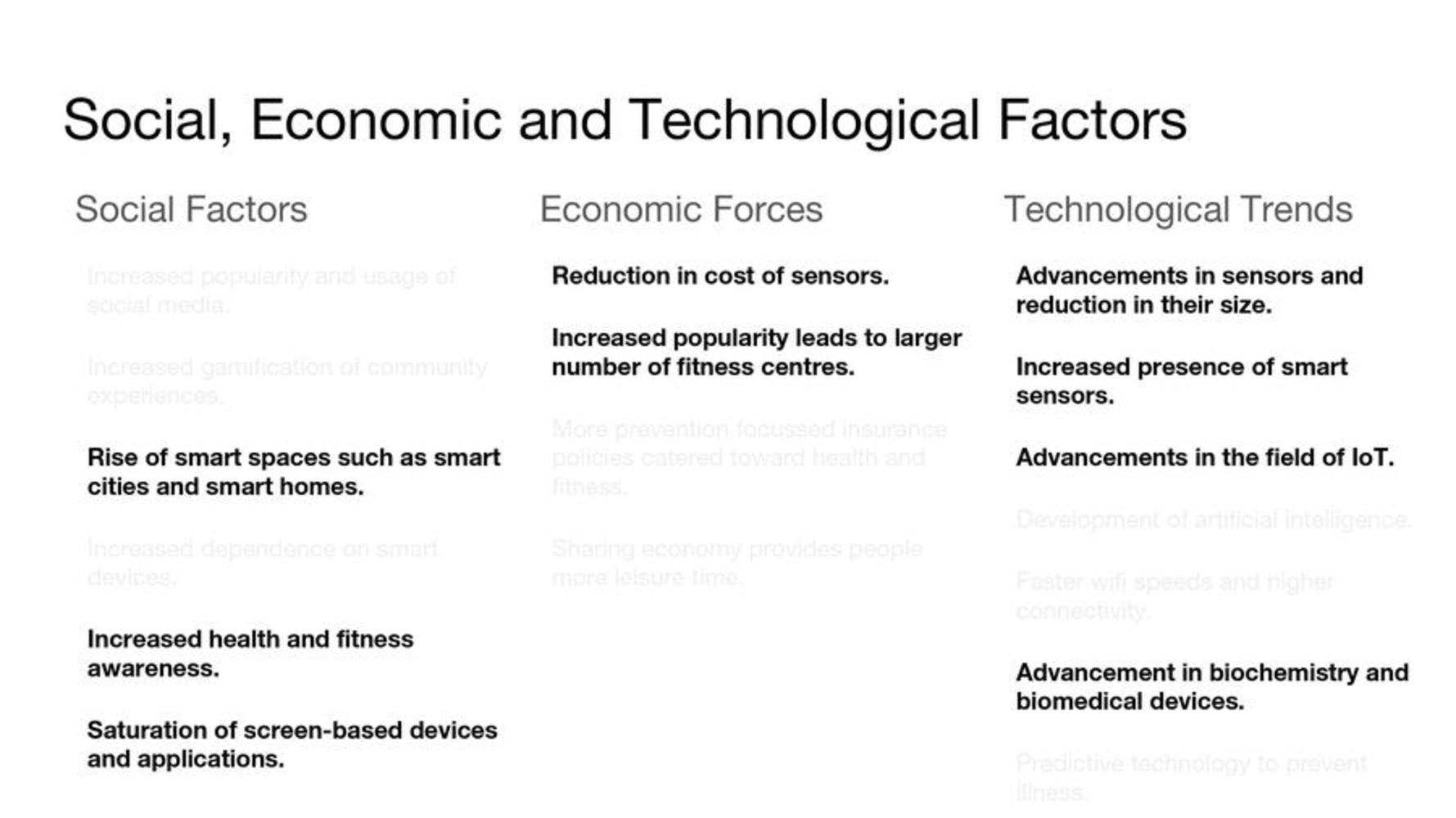Design Process
We followed these steps to create our gym ecosystem:
1. Stakeholder Map : All the stakeholders who would be affected by this ecosystem were identified and positioned on the map. The gym user was identified as our primary stakeholder and the other stakeholders are placed relative to the user on the map based on their relevance and importance.
2. User Interviews : Gym users were interviewed to understand their routine, diet and exercise preferences and likes and dislikes with respect to the gym. Some of the quotes are as below:
“I track my workout sessions carefully every time”
“I prefer to participate in group exercises with friends. Weights bore me”
“Runkeeper is my best friend when it comes to fitness. I use it to track all my cardio workouts”
“I go to the gym for weights only. I don’t find cardio useful”
"I don't know how to supplement my workout with the correct diet"
3. SET Factors: Social factors, economic forces and technological trends for 2021 were identified and the most important and relevant ones were highlighted. These trends were considered in the design of our ecosystem.

4. Ideation and Concept Generation: Based on the insights we gained, the team brainstormed and decided to create an ecosystem based on real-time tracking of biological data and nutrient and consumption water intake. Image boards were created for inspiration.
5. Prototyping: Prototypes of the devices by created by the teams. Many iterations resulted in a refined concept. Next, the devices were connected with each other to test for optimal data exchange. Finally, the devices were connected to the website which shows real-time data of the workout.
Content Rating
Is this a good/useful/informative piece of content to include in the project? Have your say!
You must login before you can post a comment. .